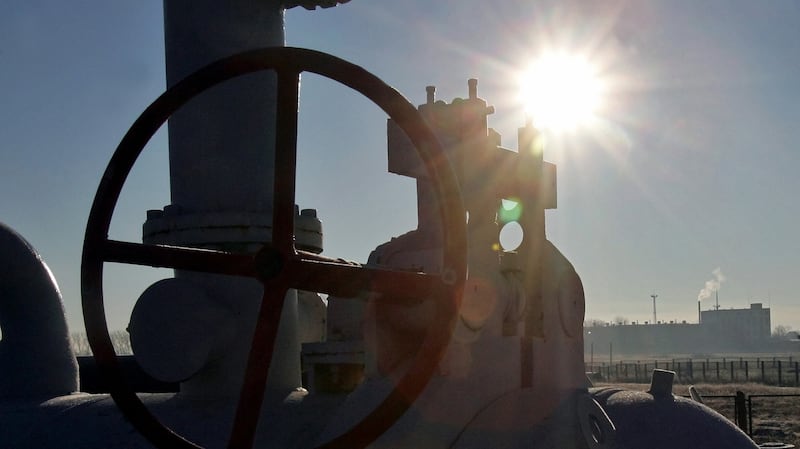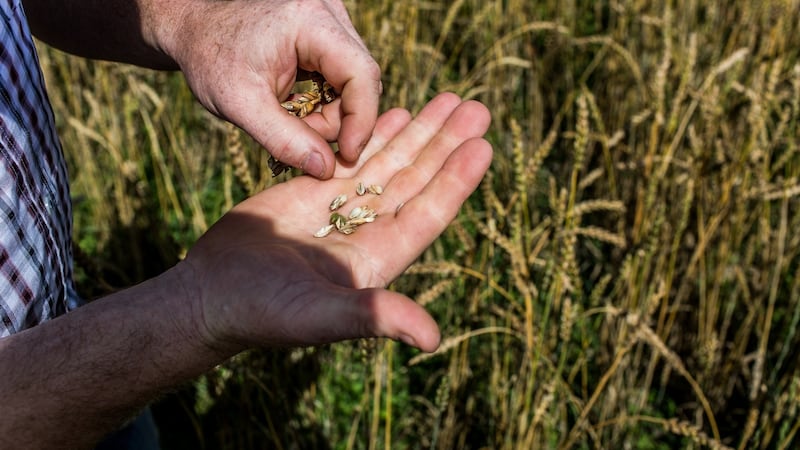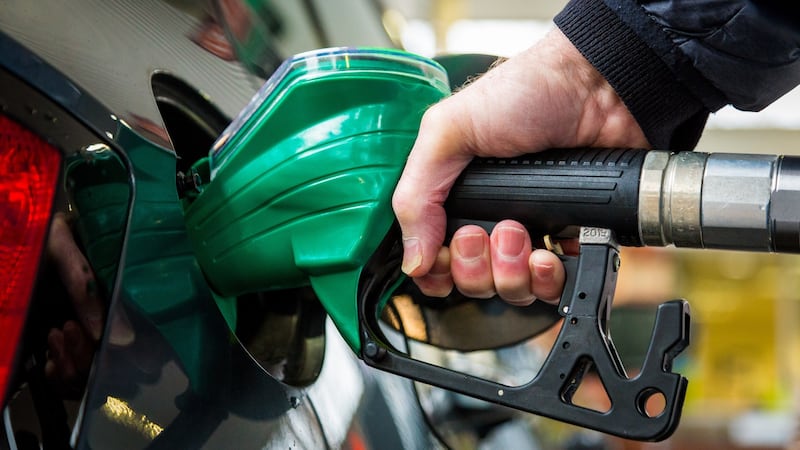Consumers and businesses face an energy shock in the wake of the Russian invasion of Ukraine, with the threat of significant hikes in oil and gas prices. The volatile situation could also have a wider impact on growth and the European economy, hitting confidence and investment, though all now depends on how the situation in Ukraine plays out.
Having just come through the unprecedented economic storm of the pandemic, another wave of uncertainty is now hitting. Forecasting the impact with any accuracy is impossible. But the cost of living squeeze looks like it is about to get worse.
With political issues and the conflict in Ukraine now taking centre stage, EU leaders, including Taoiseach Micheál Martin, have warned that the forthcoming sanctions and the likely response from Russia will inevitably take a significant economic toll – a price the West will pay in response to Russia's actions. Government departments have all been charged with developing plans in their own areas.
Energy crisis
While there is likely to be direct impacts on some Irish companies and on Russian funds in the IFSC, the big economic issue is now energy and Russia's role as a key supplier of gas and oil to Europe. Energy costs look set to rise yet further and the issue of energy security is now firmly on the table.
“While trade with Russia is small (1.5 per cent of GDP), its [Europe’s] dependence on imported energy from Russia means a worsening of the real terms of trade shock that is already in train,” according to Goodbody economist Dermot O’Leary in a note to clients on Thursday morning, “This will push inflation even higher, denting real incomes and squeezing growth.”

As Ireland imports the vast bulk of its energy – bar the gas from the Corrib field – a hike in prices is a direct economic cost, hitting household incomes and business costs. As some 40 per cent of our electricity comes from gas-fired stations, this is another channel through which higher gas prices reach consumers, as we have already seen over the past year.
Gas and oil prices shot up on world markets on Thursday – by over one-third from already elevated levels – and oil prices went over $100 a barrel for the first time since 2014. Like the rest of us, traders wonder where this will all go, but the risk of further rises in gas and ESB bills and in the price of petrol and diesel is clear.
Given the scale of the increase in commodity prices, these will not take long to start to feed through to prices.
There are a few channels through which the energy price shock can hit Ireland. Around a third of Irish gas comes from Corrib: the rest is imported via pipelines from the UK.
Supplies
While only a tiny proportion of this gas comes directly from Russia – countries like Norway and the UK itself are our main suppliers – a Russian squeeze on gas supplies in Europe in recent months has been one factor pushing up prices. So has the rebound in demand post-Covid.

The immediate threat now is of a disruption in the gas supplies coming through Ukraine itself. This route is currently estimated to account for around 20 per cent of Russian gas supply to Europe, below the normal run-rate of about one-third.
This supply generally serves Central and Eastern Europe, including countries like Slovakia and Hungary and even Italy. In a statement, the Department of Energy and Climate Change said: “Any disruption in the Ukraine region would maintain upward pressure on gas prices, with knock-on effects on electricity prices [in Ireland].”
Ukraine is also a major producer of cereals and grains – as is Russia itself – and supply disruption here could also lead to higher food prices if it has an impact on the price of food inputs across Europe. Wheat future prices on Thursday hit their highest level in a decade – more inflation in the pipeline.
A wider disruption of Russian gas supply to the EU is also possible. Russian president Vladimir Putin has already squeezed the EU by limiting gas supplies this winter and running down storage held in EU markets. And senior Russian officials have threatened worse to come in exchanges in recent days.
Russia typically accounts for around one-third of EU gas imports. Over this winter, the Department of Energy and Climate Change says that figure has been closer to 15 per cent of Europe’s daily winter gas demand, a lower figure than normal.
Russian economy
Vital now will be the interplay between the EU and Moscow as sanctions are imposed and Russia responds.
Russia depends on oil and gas for around half of its exports and government revenue, so stands to lose significantly if it limits energy exports. However, in an analysis of its options. think-tank Bruegel points out that Russia has built up foreign exchange reserves of $600 billion, or around 40 per cent of its GDP.

It thus has the financial firepower to ride out lower energy export revenues, though sanctions are expected to disrupt its access to normal financial and wider trade channels.
With Russia relying on the EU for half its exports, but only 5 per cent of EU exports going to Russia, the Russian export sector is much more exposed. But Putin’s control over a significant portion of Europe’s energy supply gives him a powerful economic weapon.
Could he decide to use this by shutting off some or all of Russia’s energy supplies to Europe, or will a stop in supplies through Ukraine hit the market? Economist John FitzGerald has pointed out that if the EU is hit with a sudden reduction in supply, the European Commission can decide effectively to ration remaining supplies between member states. That means it would not only be those directly reliant on Russian gas – such as Germany and the eastern EU states – that would be hit.
Such shortages could pose major problems for all EU governments, including Ireland’s, with 60 per cent of Ireland’s gas going to electricity plants and the rest vital for home heating and businesses.
If there is a gas shortage, much of Ireland would also depend on the UK. As part of its statement on the energy issue, the Department of the Environment and Climate Change says that “ in the very unlikely event of any gas supply emergency, there is excellent co-operation between Irish and UK gas system operators – to maintain security of gas supplies from the UK.
Diversification
“This cooperation includes regular testing of emergency plans by the operators, including load-shedding protocols”, which are essentially how energy is rationed between customers if supply is suddenly cut.
The department says that Ireland’s electricity power plants are all capable of running on liquid fuels instead of gas “and all have storage of fuels available”. Ireland also increased the output of the coal-fired Moneypoint plant significantly in 2021 to meet demand, with over one million tonnes of coal burnt last year.
However a significant portion of this coal also comes from Russia – and could be affected by sanctions or a Russian response. The ESB says it has been working to seek alternative coal suppliers, but this market too will become more expensive.
Europe has also been working to try to diversify supplies and seek extra shipments from LNG from other markets around the world. This could help to reduce any squeeze on supply. Ireland has no facility to handle LNG tankers.
A proposal to develop one in Shannon port was blocked pending a review of energy security now being undertaken by the department and Minister Eamon Ryan. The latest events have underlined the energy security issue for Ireland – and Europe – particularly as green sources such as offshore wind will take time to come on stream during the energy transition period to come.
The sanctions and Moscow’s response will affect trade and investment between Ireland and Russia, valued at around €4.5 billion last year and exporters in areas like tech services and Irish whiskey are closely watching developments. Some Irish fertiliser is also sourced in the Russian market, with prices already increasing here.
But the wider impact will be much more significant on the overall economy, with big falls in international stock markets on Thursday reflecting fears about the impact on growth – and the huge uncertainties which now lie ahead. The fears now is of a hit to growth across the world, particularly in Europe, and further upward pressure on inflation, largely due to a further hike in energy prices.
Gas prices are a good gauge. They had been trading at the end of last year around €80 per megawatt hour, a 450 per cent increase on the start of 2021. Hopes that they would ease as this year went on were already in doubt. On Thursday, the prices spiked to close to €120. That is 50 per cent up on level at the start of the year and over one-third up on the day.
Were this price level to hold, along with a higher oil price, it would deliver a big economic shock and leave EU governments again considering whether they need to act to try to compensate consumers and businesses, at least in part, as well as coping with threats to energy security.
As of now, this is – of course – all surrounded with great uncertainty. Nobody knows what is going to happen next and the humanitarian and political concerns will take precedence. But the economic outlook, having appeared to be improving and settling down a bit, is now engulfed again by big uncertainties and risks.






















